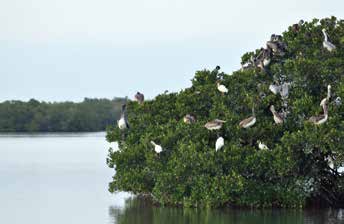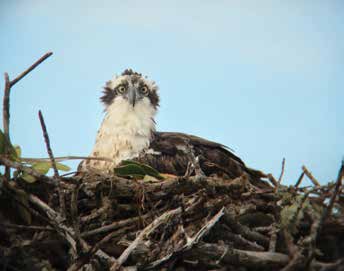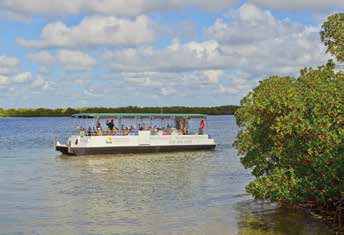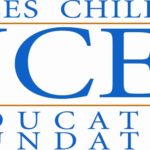Wildlife Watching on Rookery Bay Eco-Cruise
 This is peak nesting season for osprey and bald eagles. Guests aboard the Conservancy of Southwest Florida’s Good Fortune II eco-cruise in Rookery Bay enjoy glimpses of the nests.
This is peak nesting season for osprey and bald eagles. Guests aboard the Conservancy of Southwest Florida’s Good Fortune II eco-cruise in Rookery Bay enjoy glimpses of the nests.
The eagles in Hall Bay fixed up their nest in early November and in late January their eggs hatched.
The shape of the nest makes seeing the chicks difficult, but we do see the parents hard at work feeding them. The eaglets will grow from small furry balls to birds the size of the parents in about two months, which is truly amazing.
For the last few weeks, the weather on Rookery Bay has been good for wildlife watching. As the Everglades have been drying out due to a very low rainfall, the numbers of wading birds have been increasing.
Most of the osprey are nested as well. Osprey prefer to locate their nests on top of the channel markers. This year a few nests had to be rebuilt because of Hurricane Irma’s high winds, but this activity is long since finished.
 Osprey lay two to three eggs per season and one of the parents is always on the nest for warmth during the cold nights and to protect the young from the eagles.
Osprey lay two to three eggs per season and one of the parents is always on the nest for warmth during the cold nights and to protect the young from the eagles.
Many of the osprey, too, have hatched and we are starting to see the chicks. The osprey have a dark slash through their eyes, which acts to reduce glare – much like a football player who blackens under his eyes. This dark line is evident from the time the chicks hatch into a ball of white fluffy feathers right through adulthood.
Both the eagles and the ospreys feed their chicks by eating fish and then regurgitating the mixture for the babies. Next, they bring a fish to the nest and pull off small pieces which they offer to the hungry chicks and then bigger pieces until finally they will present the chicks with a whole fish and show them how to hold it with their talons and tear off pieces with their curved beak.
There have been belted kingfishers darting from tree to tree, and many wading birds. One occasional visitor to the Rookery Island is the roseate spoonbill.
Other regular visitors to Rookery Island are great egrets, snowy egrets, little blue herons, double crested cormorants, white ibis and brown pelicans. It is truly amazing how some 2,000 assorted birds can settle down on Rookery Island each night, just at sunset, some of which have been unbelievably beautiful.
 On one cruise, 15-20 magnificent frigate birds flew overhead. We occasionally get frigate birds landing on the island but not that night. They usually stay on the south end of Marco Island, but patrol much of Rookery Bay from their high altitudes. They are easy to recognize by their unique wing pattern.
On one cruise, 15-20 magnificent frigate birds flew overhead. We occasionally get frigate birds landing on the island but not that night. They usually stay on the south end of Marco Island, but patrol much of Rookery Bay from their high altitudes. They are easy to recognize by their unique wing pattern.
Dolphins have also been active and are sighted on most cruises. The best shows are when they have had enough to eat and want to play in the water and show off. This is when they jump and spin as if they were performing at Sea World.
Heading back into our dock we sometimes pass oyster catchers on the oyster bar. They are large birds with a distinctive black and white coloring and orange beaks and feet. They feed at the water line, deftly slipping their beak into the oyster’s shell and clipping the muscle that holds the shells together, then eating the oyster. Our oyster catchers are only here in the winter months and migrate northward when our weather becomes too warm.
Book your lunchtime or sunset cruise aboard the Conservancy of Southwest Florida’s eco-cruise on Rookery Bay at www.conservancy.org/goodfortune.



Leave a Reply
Want to join the discussion?Feel free to contribute!